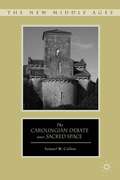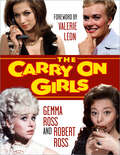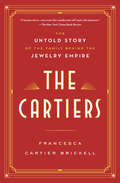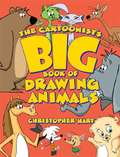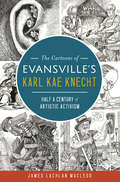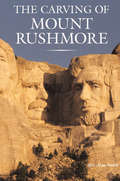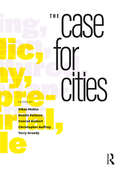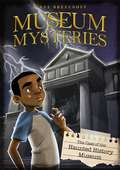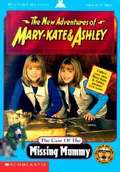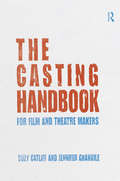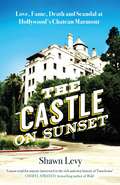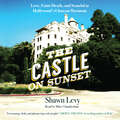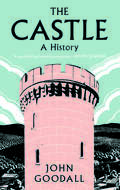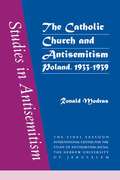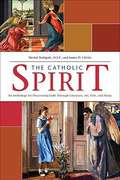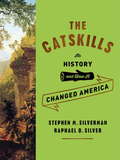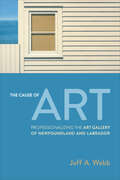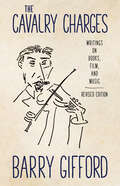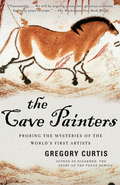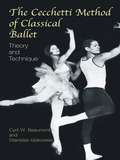- Table View
- List View
The Carolingian Debate Over Sacred Space
by Samuel W. CollinsRetracing the contours of a bitter controversy over the meaning of sacred architecture that flared up among some of the leading lights of the Carolingian renaissance, Collins explores how ninth-century authors articulated the relationship of form to function and ideal to reality in the ecclesiastical architecture of the Carolingian empire.
The Carry On Girls
by Robert Ross Gemma RossFar more than mere eye candy, these in-control, hard-working, and pioneering ladies were an early and earnest manifestation of Girl Power in the British film industry. This book will provide an invaluable celebration of the highly talented and forever decorative screen sirens that bewitched Carry On heroes Sid James, Kenneth Connor, Leslie Phillips, Bernard Bresslaw, Jim Dale, Peter Butterworth and, yes, even, Kenneth Williams.Through never-before-seen publicity material, exclusive interviews with the girls themselves and affectionate biographies by Carry On historian Robert Ross, this will be the most thumbed coffee table book ever to hit your coffee table!Soap opera favourites Amanda Barrie (Alma in Coronation Street) and Wendy Richard (Pauline Fowler in EastEnders), Bond girls Margaret Nolan, Madeline Smith and the Goldfinger star herself, Shirley Eaton, as well as international glamour stars Elke Sommer and Dany Robin, will be featured in candid interviews and stunning portrait shots.This book will be a long overdue salute to dozens of beloved Carry On actresses, from the courageous Liz Fraser to the ill-fated Imogen Hassall, and from the national treasure Barbara Windsor to the unfairly forgotten Sally Douglas. Each with a poignant and personal memory from fellow Carry On legend Valerie Leon, who will provide her unique and exclusive commentary.The book will also investigate the continuing cult of the Carry On girl, from Daniella Westbrook’s Carry On London photographic sessions to Page 3 girl Malene Espensen paying tribute to the Carry On Camping bra-burst of Barbara Windsor. All done in the best possible taste, of course, with the affection and joy that still makes the Carry On films the eternal toast of ITV3 and BritBox.The book will feature a wealth of illustrations ranging from cheesecake shots for Tit-Bits to relaxed behind-the-scenes poses with Carry On filmmakers Peter Rogers and Gerald Thomas and comedy legends such as Phil Silvers, Harry H. Corbett, Bob Monkhouse and Bernard Cribbins.Full of intimate tales from the soundstages of Pinewood Studios, snapshots of a lost industry and oodles of laughs, this is the ultimate tribute to a fun-filled era when British crumpet was at its spiciest!
The Cartiers: The Untold Story of the Family Behind the Jewelry Empire
by Francesca Cartier Brickell&“An enchanting jewel of a book.&”—Douglas Smith, author of Former People: The Final Days of the Russian Aristocracy The captivating story of the family behind the Cartier empire and the three brothers who turned their grandfather&’s humble Parisian jewelry store into a global luxury icon—as told by a great-granddaughter with exclusive access to long-lost family archives The Cartiers is the revealing tale of a jewelry dynasty—four generations, from revolutionary France to the 1970s. At its heart are the three Cartier brothers whose motto was &“Never copy, only create&” and who made their family firm internationally famous in the early days of the twentieth century, thanks to their unique and complementary talents: Louis, the visionary designer who created the first men&’s wristwatch to help an aviator friend tell the time without taking his hands off the controls of his flying machine; Pierre, the master dealmaker who bought the New York headquarters on Fifth Avenue for a double-stranded natural pearl necklace; and Jacques, the globe-trotting gemstone expert whose travels to India gave Cartier access to the world&’s best rubies, emeralds, and sapphires, inspiring the celebrated Tutti Frutti jewelry. Francesca Cartier Brickell, whose great-grandfather was the youngest of the brothers, has traveled the world researching her family&’s history, tracking down those connected with her ancestors and discovering long-lost pieces of the puzzle along the way. Now she reveals never-before-told dramas, romances, intrigues, betrayals, and more. The Cartiers also offers a behind-the-scenes look at the firm&’s most iconic jewelry—the notoriously cursed Hope Diamond, the Romanov emeralds, the classic panther pieces—and the long line of stars from the worlds of fashion, film, and royalty who wore them, from Indian maharajas and Russian grand duchesses to Wallis Simpson, Coco Chanel, and Elizabeth Taylor. Published in the two-hundredth anniversary year of the birth of the dynasty&’s founder, Louis-François Cartier, this book is a magnificent, definitive, epic social history shown through the deeply personal lens of one legendary family.
The Cartoonist's Big Book of Drawing Animals (Christopher Hart's Cartooning)
by Christopher HartAll of Chris Hart's how-to-draw titles are best-sellers. And the best-sellers among all of his best-sellers are the ones about animals. How to Draw Cartoon Animals, just one example, appears regularly on the BookScan Top 50 Art Books list, with more than 190,000 copies sold. Now The Cartoonist's Big Book of Drawing Animals is ready to roar onto the market! All the most popular animals are here, including dogs, cats, horses, penguins, lions, tigers, bears, and elephants, as well as the favorite sidekick animals--pigs, kangaroos, giraffes, turtles. Simple step-by-step drawings show how to capture every cartoon emotion, from cutesy-sweet to begging to scheming, and how to create every box-office type, from baby animals to villain animals to clueless animals and much more. Faces, bodies, paws, feet, wings, tails--every part of dozens of animals is explained in this bumper book by the world's leading author of instructional art books. It's a mega-menagerie for cartoonists!From the Trade Paperback edition.
The Cartoons of Evansville's Karl Kae Knecht: Half a Century of Artistic Activism
by James Lachlan MacleodKarl Kae Knecht’s name is synonymous with the city of Evansville. As editorial cartoonist for the Evansville Courier, he amused readers and spurred them to a higher social good. He mocked the Axis powers and kept local morale high during World War II and commented daily on issues from the Great Depression to the Space Race. He also worked tirelessly as a civic booster. Knecht helped establish Evansville College and was almost single-handedly responsible for the establishment of Mesker Park Zoo. In this absorbing account, illustrated with over seventy cartoons, University of Evansville historian James Lachlan MacLeod tells the fascinating story of Knecht’s life and analyzes his cartooning genius.
The Carving of Mount Rushmore
by Rex Alan SmithThe first book to tell the complete story of Rushmore.The Carving of Mount Rushmore tells the complete story of the largest and certainly the most spectacular sculpture in existence. More than 60 black-and-white photographs offer unique views of this gargantuan effort, and author Rex Alan Smith--a man born and raised within sight of Rushmore--recounts with the sensitivity of a native son the ongoing struggles of sculptor Gutzon Borglum and his workers.
The Case for Cities
by Danilo Palazzo Vikas Mehta Conrad Kickert Christopher Auffrey Terry GrundyThe fateful year 2020 brought dramatic challenges to American cities. The COVID-19 pandemic and the civil unrest caused by the killing of George Floyd led to a cascade of negative media stories about cities, often politically motivated. It seemed possible that the economic and demographic gains cities had achieved over the last few decades could be lost. In fact, there has been measurable population loss in larger cities caused by changing work/life patterns and changing public perceptions about the costs and benefits of urban living. Faced with these challenges, advocates for cities must make a vigorous case for cities and show how they aren’t the cause of America’s social, environmental, economic, and public health problems but, in fact, are the places where the solutions to those problems will be found. The 38 chapters in The Case for Cities draw on the expertise of contributors from the academic, professional, and civic sectors to explore the creative tension between the two great values on which the vigor of cities depends––that they should be "Cities of Choice" (places where people who have choice want to live) and "Cities of Justice" (places that welcome and support people with limited choices). The book’s underlying perspective is that these two values are symbiotic and that promoting both is what leads to viable, sustainable urban resurgence. This book will be of keen interest to students and practitioners in urban planning, urban design, real estate, architecture, and landscape architecture and to urban advocates and civic leaders.
The Case of the Haunted History Museum (Museum Mysteries #1)
by Steve BrezenoffCapitol City's Natural History Museum is haunted - or at least that's what someone wants people to think. But Wilson Kipper, son of the museum's head paleontologist, knows better. When the mysterious occurrences go from spooky to dangerous, the museum is forced to close its doors. Can Wilson and his friends get to the bottom of things, or will the Natural History Museum be closed for good?
The Case of the Missing Mummy (The New Adventures of Mary-Kate and Ashley)
by Francess LantzMary-Kate and Ashley couldn't wait to see the mummy exhibit at their at museum. But when they got there, the mummy was gone! Join the Trenchcoat Twins as they solve one of their most puzzling mysteries ever!
The Casting Handbook: For Film and Theatre Makers
by Suzy Catliff Jennifer GranvilleCasting is a crucial creative element of any production - and yet the craft and skills needed to put together a successful and exciting cast are often overlooked. The Casting Handbook explains the casting process from beginning to end and covers everything producers and directors needs to know – as well as proving a fascinating and illuminating read for actors. The book explores: how to prepare a breakdown where to source actors how to prepare for a casting session how to make casting decisions how a cast is put together how deals are done ethics and the law, with special reference to casting children how a casting director contributes to the initial development of the script how the casting works from fringe theatre to Hollywood blockbusters The Casting Handbook considers actors’, producers’, agents’ and directors’ relationship with a casting director, the day to day work that is casting, and how approaching it in a professional and informed manner can make the difference to the final product. Including interviews with actors, agents, directors, casting directors and producers; case studies; exercises; and a fact file of useful templates and contacts, this book offers a thorough induction into the casting process, suitable for students and early career professionals in any media.
The Castle on Sunset: Love, Fame, Death and Scandal at Hollywood's Chateau Marmont
by Shawn LevyFor nearly ninety years, Hollywood's brightest stars have favoured the Chateau Marmont as a home away from home. Filled with deep secrets but hidden in plain sight, its evolution parallels the growth of Hollywood itself. Perched above the Sunset Strip like a fairy-tale castle, the Chateau seems to come from another world entirely. An apartment-house-turned-hotel, it has been the backdrop for generations of gossip and folklore: 1930s bombshell Jean Harlow took lovers during her third honeymoon there; director Nicholas Ray slept with his sixteen-year-old Rebel Without a Cause star Natalie Wood; Anthony Perkins and Tab Hunter met poolside and began a secret affair; Jim Morrison swung from the balconies, once nearly falling to his death; John Belushi suffered a fatal overdose in a private bungalow; Lindsay Lohan got the boot after racking up nearly $50,000 in charges in less than two months. Much of what's happened inside the Chateau's walls has eluded the public eye - until now. With wit and prowess, Shawn Levy recounts the wild parties and scandalous liaisons, creative breakthroughs and marital breakdowns, births and untimely deaths that the Chateau Marmont has given rise to. Vivid, salacious and richly informed, the book is a glittering tribute to Hollywood as seen from the suites and bungalows of its most hallowed hotel.
The Castle on Sunset: Love, Fame, Death and Scandal at Hollywood's Chateau Marmont
by Shawn LevyChateau Marmont has sat atop the Sunset Strip for nearly a century, like the Rock of Gibraltar. It is a place filled with deep secrets but is hidden in plain sight, and its evolution parallels the growth of Hollywood itself. Since the dawn of talking pictures, the Chateau Marmont has promised privacy, mystery and a whiff of old glamour. It's where John Belushi overdosed after a three-day binge, it's the place where Roman Polanski and Sharon Tate lived while their infamous house on Cielo Drive was being completed. Billy Wilder, F. Scott Fitzgerald, Gore Vidal and Howard Hughes all spent time as long-term residents in the Chateau. Rebel without a Cause, starring James Dean and Natalie Wood, was largely conceived, cast, rehearsed and, in some way, lived, in one of its suites. Led Zeppelin may or may not have driven motorcycles through the hotel's lobby. Beyoncé and Jay-Z recently threw an Oscars bash in the hotel parking garage.With wit and prowess, Shawn Levy recounts the wild parties and scandalous liaisons, creative breakthroughs and marital breakdowns, births and untimely deaths that the Chateau Marmont has given rise to. Vivid, salacious and richly informed, the book is a glittering tribute to Hollywood as seen from the suites and bungalows of its most hallowed hotel.(p) Penguin Random House Audio 2019
The Castle: A History
by John GoodallA vibrant history of the castle in Britain, from the early Middle Ages to the present day The castle has long had a pivotal place in British life, associated with lordship, landholding, and military might, and today it remains a powerful symbol of history. But castles have never been merely impressive fortresses—they were hubs of life, activity, and imagination. John Goodall weaves together the history of the British castle across the span of a millennium, from the eleventh to the twenty-first century, through the voices of those who witnessed it. Drawing on chronicles, poems, letters, and novels, including the work of figures like Gawain Poet, Walter Scott, Evelyn Waugh, and P. G. Wodehouse, Goodall explores the importance of the castle in our culture and society. From the medieval period to Civil War engagements, right up to modern manifestations in Harry Potter, Goodall reveals that the castle has always been put to different uses, and to this day continues to serve as a source of inspiration.
The Castles of Britain and Ireland
by Rodney CastledenTo many, medieval castles are the essence of Britain and Ireland's fascinating past. Immersed in history and centuries old, each one tells a story of Kings, Queens and feuding lords; war and bloody conflict; treason, revenge and murder.In Castles of Britain and Ireland, Rodney Castleden weaves a fascinating and detailed narrative of 115 of the grandest and most historically significant castles in the British Isles, including Balmoral in Scotland, Bunratty in Ireland, Caernarfon in Wales and St Michael's Mount in England. As well as the details of the construction, function, and often the destruction of these magnificent buildings, each chapter also tells the human stories behind these ancient walls, with fascinating details of everyday life within.
The Catholic Church and Antisemitism
by Ronald ModrasInterwar Poland was home to more Jews than any other country in Europe. Its commonplace but simplistic identification with antisemitism was due largely to nationalist efforts to boycott Jewish business. That they failed was not for want of support by the Catholic clergy, for whom the ''Jewish question'' was more than economic. The myth of a Masonic-Jewish alliance to subvert Christian culture first flourished in France but held considerable sway over Catholics in 1930s Poland as elsewhere. This book examines how, following Vatican policy, Polish church leaders resisted separation of church and state in the name of Catholic culture. In that struggle, every assimilated Jew served as both a symbol and a potential agent of security. Antisemitism is no longer regarded as a legitimate political stance. But in Europe, the United States, and the Middle East, the issues of religious culture, national identity, and minorities are with us still. This study of interwar Poland will shed light on dilemmas that still effect us today.
The Catholic Spirit: An Anthology for Discovering Faith Through Literature, Art, Film, and Music
by Michel Bettigole James D. Childs<p>Pope John Paul II pointed out that it is through the arts that religious truths are made tangible "making perceptible...the world of the spirit, of the invisible, of God." <p>The Catholic Spirit: An Anthology for Discovering Faith Through Literature, Art, Film, and Music takes up this charge and presents the truths of Catholicism in the context of the arts: great artwork, literature, music, and Church writings. The Catholic Spirit sends teens on a journey through classical works like Flannery O'Connors "Parker's Back, Gerard Manley Hopkins' "God's Grandeur," Michelangelo's The Creation of Adam, and Gregorian chant, along with modern classics like "A Woman's Prayer" by Dorothy Day and films like Cool Hand Luke and On the Waterfront. <p>Organized around chapters that follow the structure of the Catechism of the Catholic Church, the text includes primary source material from varying periods of Church history with contextual and background text to help students understand their significance. <p>Several additional research opportunities are included to further the students' study of the key teachings of the Church through reading, viewing, and listening to classical period pieces. An online teacher resource also indexes the material to themes in the new curriculum framework.</p>
The Catskills
by Stephen M. Silverman Raphael D. SilverThe Catskills ("Cat Creek" in Dutch), America's original frontier, northwest of New York City, with its seven hundred thousand acres of forest land preserve and its five counties--Delaware, Greene, Sullivan, Ulster, Schoharie; America's first great vacationland; the subject of the nineteenth-century Hudson River School paintings that captured the almost godlike majesty of the mountains and landscapes, the skies, waterfalls, pastures, cliffs . . . refuge and home to poets and gangsters, tycoons and politicians, preachers and outlaws, musicians and spiritualists, outcasts and rebels . . . Stephen Silverman and Raphael Silver tell of the turning points that made the Catskills so vital to the development of America: Henry Hudson's first spotting the distant blue mountains in 1609; the New York State constitutional convention, resulting in New York's own Declaration of Independence from Great Britain and its own constitution, causing the ire of the invading British army . . . the Catskills as a popular attraction in the 1800s, with the construction of the Catskill Mountain House and its rugged imitators that offered WASP guests "one-hundred percent restricted" accommodations ("Hebrews will knock vainly for admission"), a policy that remained until the Catskills became the curative for tubercular patients, sending real-estate prices plummeting and the WASP enclave on to richer pastures . . . Here are the gangsters (Jack "Legs" Diamond and Dutch Schultz, among them) who sought refuge in the Catskill Mountains, and the resorts that after World War II catered to upwardly mobile Jewish families, giving rise to hundreds of hotels inspired by Grossinger's, the original "Disneyland with knishes"--the Concord, Brown's Hotel, Kutsher's Hotel, and others--in what became known as the Borscht Belt and Sour Cream Alps, with their headliners from movies and radio (Phil Silvers, Eddie Cantor, Milton Berle, et al.), and others who learned their trade there, among them Moss Hart (who got his start organizing summer theatricals), Sid Caesar, Lenny Bruce, Mel Brooks, Woody Allen, and Joan Rivers. Here is a nineteenth-century America turning away from England for its literary and artistic inspiration, finding it instead in Washington Irving's "Rip Van Winkle" and his childhood recollections (set in the Catskills) . . . in James Fenimore Cooper's adventure-romances, which provided a pastoral history, describing the shift from a colonial to a nationalist mentality . . . and in the canvases of Thomas Cole, Asher B. Durand, Frederick Church, and others that caught the grandeur of the wilderness and that gave texture, color, and form to Irving's and Cooper's imaginings. Here are the entrepreneurs and financiers who saw the Catskills as a way to strike it rich, plundering the resources that had been likened to "creation," the Catskills' tanneries that supplied the boots and saddles for Union troops in the Civil War . . . and the bluestone quarries whose excavated rock became the curbs and streets of the fast-growing Eastern Seaboard. Here are the Catskills brought fully to life in all of their intensity, beauty, vastness, and lunacy.From the Hardcover edition.
The Cause of Art: Professionalizing the Art Gallery of Newfoundland and Labrador
by Jeff WebbIn 1949, Newfoundland and Labrador had a widely celebrated oral culture but little visual art. After entering the Canadian federation, recreational painters worked to create a venue for the display of art. The Cause of Art tells the story of the advocates, curators, and professional artists who laid the foundation for an artistic community in the province. The Memorial University Art Gallery was the site of a struggle between recreational painters who aspired to express their creative impulse and develop a Newfoundland art, and curators who wanted artists to participate in the Canadian art market and international artistic movements. The book recounts the history of passionate and strong-willed curators and cultural administrators who fought for control of the gallery. It reveals how they appealed to competing conceptions of professionalization, as well as diverse political and aesthetic preferences. Based on extensive archival research in previously unexamined collections, and oral interviews with key informants, this book examines a cultural institution that is widely remembered as the centre of the cultural renaissance in late twentieth-century Newfoundland and Labrador. As a result, The Cause of Art illuminates the relationship between the state and the university during a key period in the modernization of the province.
The Cavalry Charges: Writings on Books, Film, and Music, Revised Edition
by Barry GiffordThe Cavalry Charges: Writings on Books, Film, and Music, Revised Edition is a collection of anecdotal reflections that relate many of the experiences that shaped Barry Gifford as a writer. Representative of Gifford’s body of work, this volume is divided into three sections: books, film and television, and music. Within these sections, Gifford’s best work is showcased, including a nine-part dossier on Marlon Brando’s One-Eyed Jacks in which Gifford examines the public and private lives of those involved in the film. New to the collection are four previously published essays: a brief look at the novels of Álvaro Mutis; a reflection on Gifford’s schooling under Nebraska poet John Neihardt; an essay on Elliot Chaze and his novel Black Wings Has My Angel; and a short piece on Sailor and Lula.
The Cave Painters
by Gregory CurtisThe Cave Painters is a vivid introduction to the spectacular cave paintings of France and Spain--the individuals who rediscovered them, theories about their origins, their splendor and mystery.Gergory Curtis makes us see the astonishing sophistication and power of the paintings and tells us what is known about their creators, the Cro-Magnon people of some 40,000 years ago. He takes us through various theories--that the art was part of fertility or hunting rituals, or used for religious purposes, or was clan mythology--examining the ways interpretations have changed over time. Rich in detail, personalities, and history, The Cave Painters is above all permeated with awe for those distant humans who developed--perhaps for the first time--both the ability for abstract thought and a profound and beautiful way to express it.From the Trade Paperback edition.
The Cave Painters: Probing the Mysteries of the Worlds First Artists
by Gregory CurtisIn this comprehensive study of the cave paintings of France and Spain, Curtis touches on every aspect of the paintings, from their beauty and theories about their origins to the men and women who rediscovered them. He considers the meaning of the paintings by reviewing the major theories--that the art was part of fertility or hunting rituals, was used for religious purposes or was clan mythology--and explaining the ways in which ethnography, archeology and religion have influenced the thinking about the paintings over time. Annotation ©2007 Book News, Inc. , Portland, OR (booknews. com)
The Cecchetti Method of Classical Ballet: Theory and Technique
by Cyril W. Beaumont Stanislas IdzikowskiThis dance classic presents a complete beginning course in classical ballet. The founder of this method, Enrico Cecchetti (1850–1928), performed and taught in Russia and with Diaghilev's troupe. By elaborating on a logical progression of exercises, Cecchetti provided dance with an unprecedented unity — balancing the adagio and allegro, re-establishing the notion of "legato," strengthening the arabesque, and developing the exercise of the pliés. Cyril W. Beaumont, a distinguished writer on ballet, has codified Cecchetti's program of study with the assistance of one of Cecchetti's star pupils, Stanislas Idzikowski, and with the approval of Cecchetti himself.The first chapter defines and illustrates the basic theory of the positions, body movements, and technical terms. Detailed chapters of exercises include "Exercises at the Bar," "Port de Bras," "Centre Practice," "Adagio," and "Allegro." Each exercise appears with a numbered series of instructions, and a table of daily exercises for the week is provided. The text is accompanied by 109 line illustrations, showing positions and movements of the body in detail and offering ballet lovers a perfect guide to the basics of classical ballet.
The Celebrity Monarch: Empress Elisabeth and the Modern Female Portrait (Performing Celebrity)
by Olivia Gruber FlorekEmpress Elisabeth of Austria (1837-1898), wife of Habsburg Emperor Francis Joseph I, was celebrated as the most beautiful woman in Europe. Glamorous painted portraits by Franz Xaver Winterhalter and widely collected photographs spread news of her beauty, and the twentieth-century German-language film trilogy Sissi (1955-57) cemented this legacy. Despite the enduring fascination with the empress, art historians have never considered Elisabeth’s role in producing her public portraiture or the influence of her creation. The Celebrity Monarch reveals how portraits of Elisabeth transformed monarchs from divinely appointed sovereigns to public personalities whose daily lives were consumed by spectators. With resources ranging from the paintings of Gustav Klimt and Elisabeth’s private collection of celebrity photography to twenty-first century collages and films by T. J. Wilcox, this book positions Elisabeth herself as the primary engineer of her public image and argues for the widespread influence of her construction on both modern art and the emerging phenomenon of celebrity.
The Celestial Dancers: Manipuri Dance on Australian Stage (Routledge Advances in Theatre & Performance Studies)
by Amit SarwalThe Celestial Dancers: Manipuri Dance on Australian Stage charts the momentous journey of the popularization of Manipur’s Hindu dances in Australia. Tradition has it that the people of Manipur, a northeastern state of India, are descended from the celestial gandharvas, dance and music blessed among them as a God’s gift. The intricately symbolic Hindu dances of Manipur in their original religious forms were virtually unseen and unknown outside India until an Australian impresario, Louise Lightfoot, brought them to the stage in the 1950s. Her experimental changes through a pioneering collaboration with dancers Rajkumar Priyagopal Singh and Ibetombi Devi modernized Manipuri dance for presentation on a global stage. This partnership moved Manipur’s Hindu dances from the sphere of ritualistic temple practice to a formalized stage art abroad. Amit Sarwal chronicles how this movement, as in the case of other prominent Indian classical dances and dancers, enabled both Manipuri dance and dancers to gain recognition worldwide. This book is ideal for anyone with an interest in Hindu temple dance, Manipur dance, cross-cultural collaborations and the globalizing of Indian Classical Dance. The Celestial Dancers is a comprehensive study of how an exceptional Hindu dance form developed on the global stage.
The Celluloid Atlantic: Hollywood, Cinecittà, and the Making of the Cinema of the West, 1943–1973 (SUNY series, Horizons of Cinema)
by Saverio GiovacchiniOffers a fresh look at American and Italian cinema in the postwar period.The Celluloid Atlantic changes the way we look at American and Italian cinema in the postwar period. In the thirty years following World War II, American and Italian film industries came to be an integrated, transnational unit rather than two separate, nation-based entities. Written in jargon-free prose and based on previously unexplored archival sources, this book revisits the history of Neorealism, World War II combat cinema, the "Western all'Italiana," and the career of John Kitzmiller, the African American star who made Italy his home and was the first person of color to win the Best Actor Award at the Cannes Film Festival. The Celluloid Atlantic makes the trailblazing argument that culturally hybrid genres like the so-called spaghetti Western were less the exceptions than the norm. Giovacchini argues that the waning of the Celluloid Atlantic in the early 1970s was due to the economic policies of the first Nixon administration, specifically its important, but largely neglected, Revenue Act of 1971, as well as to the ideological debates between Europeans and Americans that intensified during the American intervention in Vietnam.
